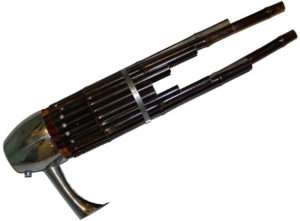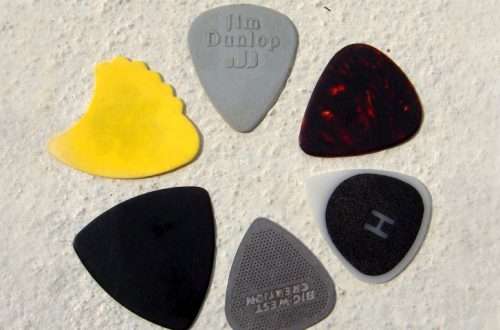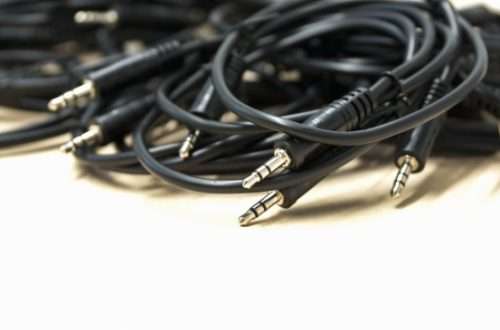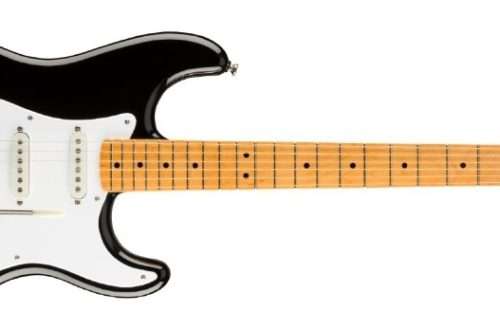
Sheng history
Shen – wind reed musical instrument. It is one of the oldest Chinese musical instruments.
History of Sheng
The first mention of the shen dates back to 1100 BC. The history of its origin is associated with a beautiful legend – it was believed that sheng gave people Nuwa, the creator of the human race and the goddess of matchmaking and marriage.
The sound of the sheng resembled the cry of a Phoenix bird. Indeed, the sound of the instrument is particularly expressive and clear. Initially, sheng was intended for the performance of spiritual music. During the reign of the Zhou Dynasty (1046-256 BC), he gained the greatest popularity. He acted as an accompanying instrument for court dancers and singers. Over time, it became popular among the common people, it could be heard more and more often at city fairs, festivities and festivities. In Russia, the Shen was known only in the XNUMXth-XNUMXth centuries.
The device and technique of sound extraction
Sheng – is considered the ancestor of musical instruments, a characteristic feature of which is the reed method of extracting sound. Moreover, due to the fact that sheng allows you to extract several sounds at the same time, it can be assumed that it was in China that they first began to perform polyphonic works. According to the method of sound production, sheng belongs to the group of aerophones – instruments, the sound of which is the result of the vibration of the air column.
Sheng belongs to a variety of harmonicas and is distinguished by the presence of resonator tubes. The instrument consists of three main parts: body (“douzi”), tubes, reeds.
The body is a bowl with a mouthpiece for blowing air. Initially, the bowl was made from a gourd, later from wood or metal. Now there are cases made of copper or wood, varnished.  On the body there are holes for tubes made of bamboo. The number of tubes is different: 13, 17, 19 or 24. They are also different in height, but are arranged in pairs and symmetrically relative to each other. Not all tubes are used in the game, some of them are decorative. Holes are drilled at the bottom of the tubes, by clamping them and at the same time blowing in or blowing out air, the musicians extract sound. In the lower part there are tongues, which are a metal plate made of an alloy of gold, silver or copper, 0,3 mm thick. A tongue of the required length is cut inside the plate – thus, the frame and the tongue are one piece. To enhance the sound, longitudinal recesses are made in the upper inner part of the tubes so that the air oscillations occur in resonance with the reeds. Sheng served as the prototype for the accordion and harmonium in the early 19th century.
On the body there are holes for tubes made of bamboo. The number of tubes is different: 13, 17, 19 or 24. They are also different in height, but are arranged in pairs and symmetrically relative to each other. Not all tubes are used in the game, some of them are decorative. Holes are drilled at the bottom of the tubes, by clamping them and at the same time blowing in or blowing out air, the musicians extract sound. In the lower part there are tongues, which are a metal plate made of an alloy of gold, silver or copper, 0,3 mm thick. A tongue of the required length is cut inside the plate – thus, the frame and the tongue are one piece. To enhance the sound, longitudinal recesses are made in the upper inner part of the tubes so that the air oscillations occur in resonance with the reeds. Sheng served as the prototype for the accordion and harmonium in the early 19th century.
Sheng in the modern world
Sheng is the only one of the traditional Chinese instruments that is used for playing in an orchestra due to the peculiarities of its sound.
Among the varieties of shengs, the following criteria are distinguished:
- Depending on the pitch: sheng-tops, sheng-alto, sheng-bass.
- Depending on the physical dimensions: dasheng (big sheng) – 800 mm from the base, gzhongsheng (middle sheng) – 430 mm, xiaosheng (small sheng) – 405 mm.
The sound range depends on the number and length of the tubes. Sheng has a twelve-step chromatic scale, characterized by a uniformly tempered scale. Thus, the sheng is not only one of the oldest traditional Chinese instruments that have survived to our time, but still continues to occupy a special place in Eastern culture – musicians perform music on the shen solo, in an ensemble and in an orchestra.





